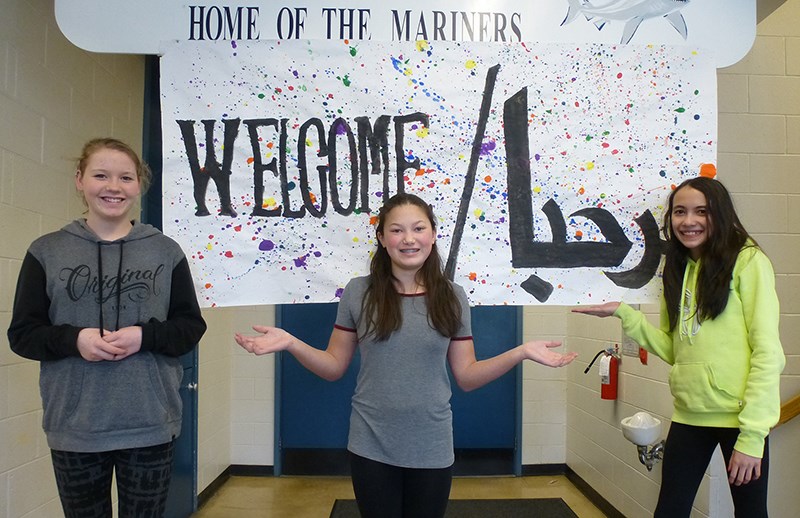The long-promised Syrian refugee children, as well as refugee kids from Afghanistan and Iran, have been arriving in School District 43 in recent weeks and are settling into local schools.
In fact, only six students, the most recent arrivals who came this past Monday, have yet to move to local schools but are attending a welcome centre where they are first assessed and given support.
Since December, SD43 has enrolled 42 school-aged kids. As well, two pre-schoolers, aged three and four, have also arrived and are attending Strong Start programs with their families.
So far, most of the arrivals, 30, have been from Syria, with six coming from Afghanistan and six from Iran. More than half of the newcomer children, 28, are of elementary school age, with six attending middle school and eight attending to secondary school.
Assistant superintendent Reno Ciolfi said the students attend a welcome centre at Montgomery middle school when they arrive for an assessment and to get support from Settlement Workers in Schools who speak their language. Teachers in the class help them with school work.
WELCOME CENTRE
After a few days or longer, the students move off to their local schools, in classrooms available near their apartments in Coquitlam's Cottonwood neighbourhood where housing has been provided.
But it's the younger, elementary school-aged, children who move the most quickly into their new school, Ciolfi said.
"That's where the greatest cluster of English language learners are and elementary schools are easier to get started at. For middle or secondary, sometimes the process takes a bit longer. For one thing, there's a semester change in secondary. If we can co-ordinate with a semester change, we do.
"The transition to middle and secondary is socially more difficult," Ciolfi explained. "Sometimes the older children… I'm going to say have experienced more trauma, at least that's the concern. We are a bit more cautious in integrating into middle or secondary."
At the welcome centre, students attend small classes, go on field trips to the local recreation centre and libraries, and work on their vocabulary. In some cases, students can speak English but the language level is varied, with some able to translate for their siblings and parents and others with low levels of English skills.
HOUSING AN ISSUE
Welcoming so many refugees is not new for the district, which typically enrols about 30 refugee students each school year, but taking that number in such a short period of time is unusual, Ciolfi said, noting teachers are receiving support, have materials to help them work with their new students and the students get help from 10 settlement workers who speak several languages.
"We were kind of expecting this," Ciolfi said, "but you never know until they arrive."
It's not known for certain how many more students will come to SD43 because of a shortage of affordable housing. The agency responsible for services for Government Assisted Refugee families, Immigrant Services Society, said the family size of the new arrivals requires three bedrooms, which are hard to come by.
Here in Coquitlam, Concert Properties offered 15 apartments for refugee families at below market rates, which provided needed accommodation for several families.
"We're expecting more," Ciolfi said, "The real question is is where is there affordable housing in the Tri-Cities where they will settle?"
[email protected]
@dstrandbergTC



